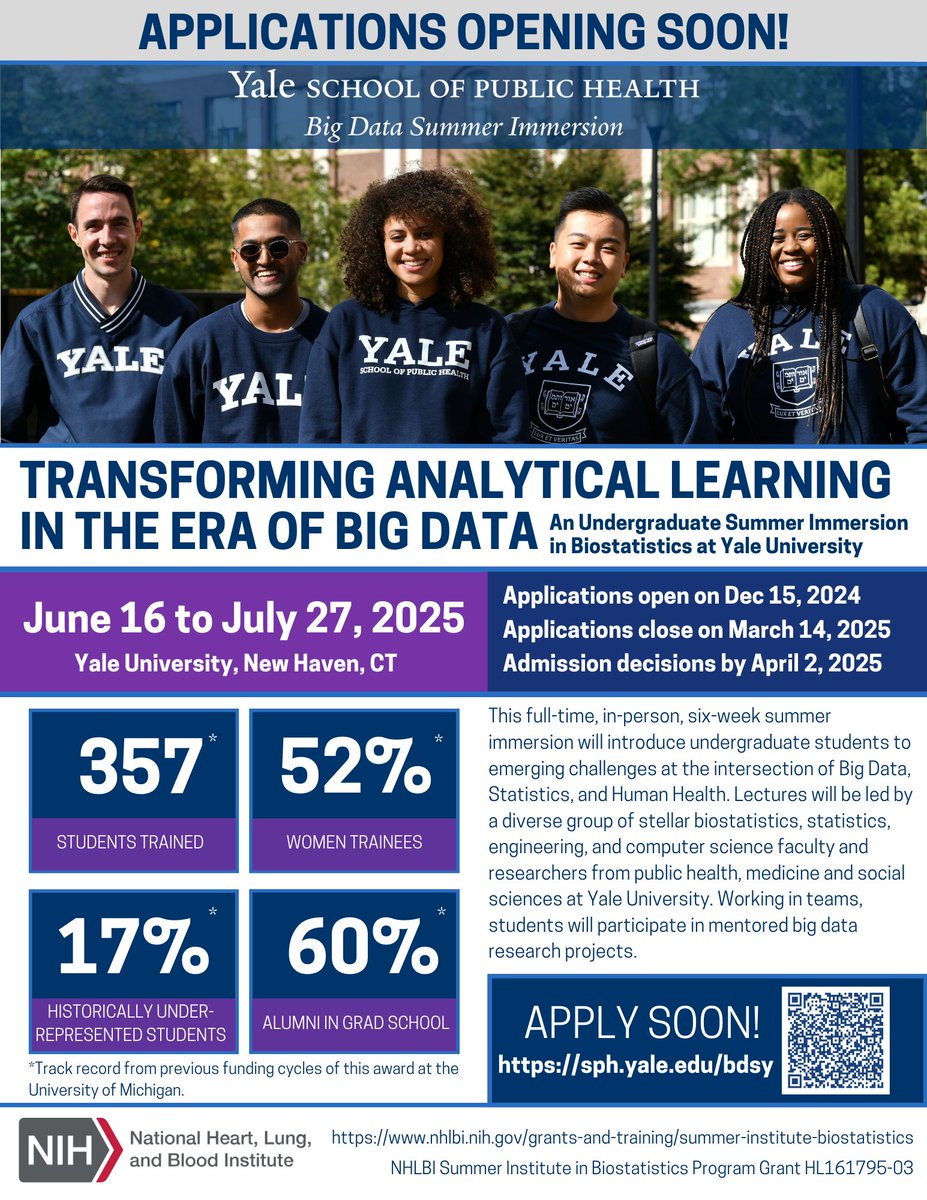
Fan Li
@FanLi90
Followers
552
Following
484
Statuses
98
Associate Professor, Department of Biostatistics @ysphbiostat @YaleSPH. Biostatistics, clinical trials, observational studies, causal inference, clustered data.
New Haven, CT
Joined December 2017
RT @ColinBBegg: Bothered by the proliferation of stepped-wedge clinical trials with very few clusters? Guanyu Tong and colleagues study thi…
0
3
0
Ready to transform your analytical skills in the BIG data era? Join us at @YaleSPH for the Big Data Summer Immersion program! This 6-week program introduces undergraduate students to cutting-edge challenges in Big Data, Statistics, and Human Health. Applications open on Dec 15.
0
4
11
In this new paper led by @BingkaiWang, we showed that stepped wedge randomization can guard against covariate, random-effects, and error structure misspecifications, though treatment effect structure still requires careful consideration.
0
0
25
RT @YaleNephrology: @Nephronette presented her RCT of Early, Individualized Recommendations for Hospitalized Patients With AKI on the big s…
0
7
0
RT @IMPACTCollab1: New article by @TonyGuangyuTONG and others reviews key practices in designing and analyzing these small-scale #Clinical…
0
3
0
Curious about extremely small stepped wedge cluster randomized trials (SW-CRTs)? Our latest paper, led by @TonyGuangyuTONG, explores the landscape of published SW-CRTs with <= 6 clusters. Take a look at what we found! @ColinBBegg @SteppedWedgehog
0
5
14
RT @rohan_khera: Excited to announce that @cards_lab is launching the DETECT-AS Study w R01 funding from @NIH/@NIHAging Details: https://t…
0
18
0
RT @Collaboratory1: Members of our Biostatistics and Study Design Core tested the performance of various analytic models for individually r…
0
2
0
RT @ColinBBegg: Does the hazard ratio have a causal interpretation? Should Cox modeling be used in analyzing clinical trials? Read all abou…
0
16
0
RT @ColinBBegg: Chao Cheng and colleagues show how to examine causal effects on the survival probability scale in the presence of treatment…
0
1
0
RT @SteppedWedgehog: 📢Abstract deadline extension: the deadline for abstracts to the 10th Annual Meeting on Current Developments in Cluster…
0
4
0
@statsepi @Brennan_Kahan @Michael_Harhay In Brennan's articles, we provided further interpretation of this statements along with some mathematical formulation.
0
0
0
@statsepi @Brennan_Kahan @Michael_Harhay From Donner and Klar (2000) "The target of inference in such studies (CRTs) could be at either the individual level or community level … These examples show the importance of investigators explicitly formulating and stating the hypothesis under test in CRTs".
0
0
0

